Affiliate links on Android Authority may earn us a commission. Learn more.
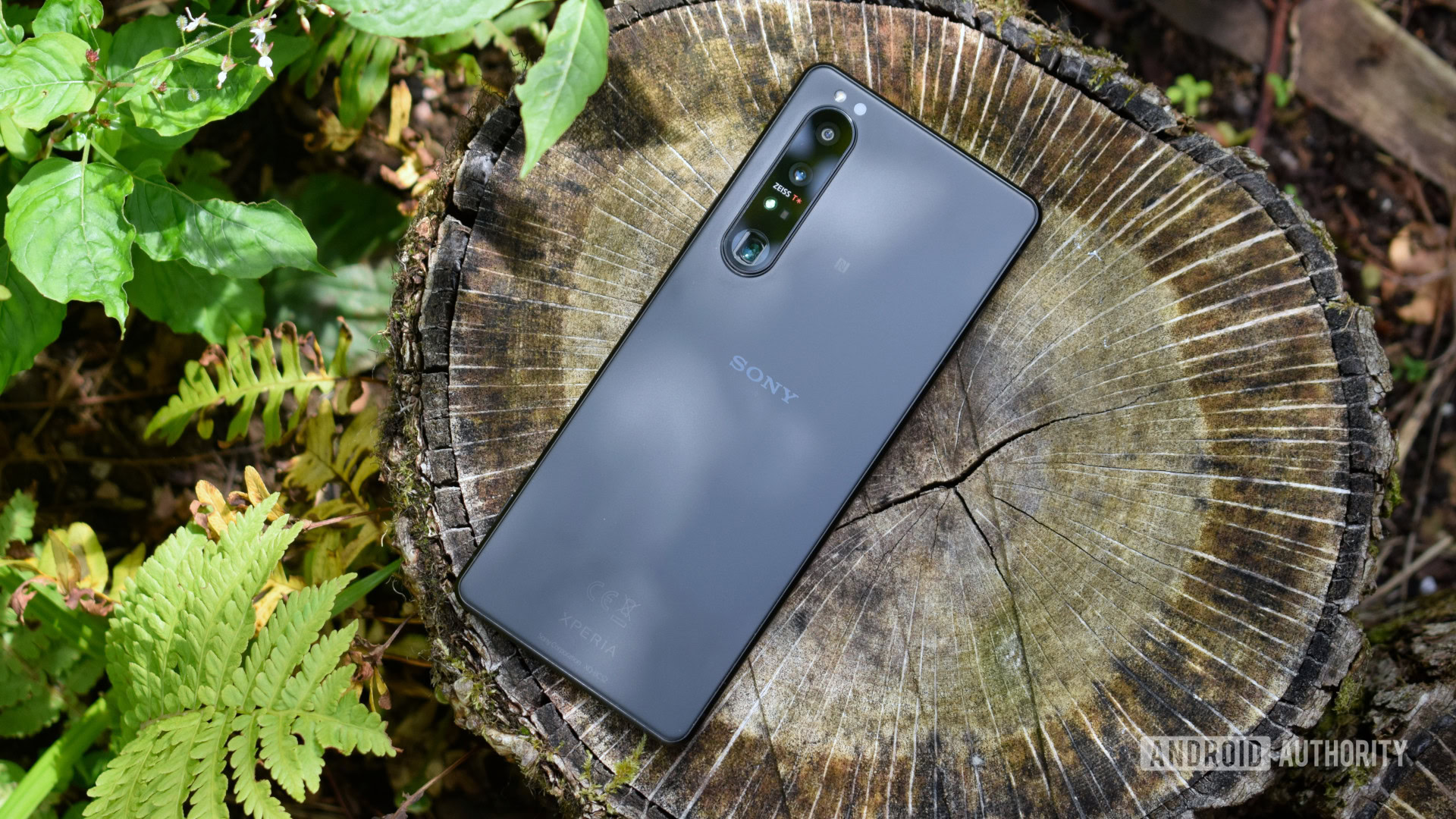

Sony Xperia 1 III review: Elegant, exhilarating, expensive
Published onJuly 14, 2022

Sony Xperia 1 III
MSRP:
What we like
What we don't like
Our scores

Sony Xperia 1 III
After a series of lackluster flagships, the last couple of years have seen Sony closing in on a truly great smartphone setup. The company’s latest attempt to perfect its multimedia powerhouse is the Sony Xperia 1 III. But as well as new hardware, this latest entry also comes with Sony’s highest ever smartphone price tag. The sheer expense is bound to prove contentious.
Still, Sony knows its audience, and this is a smartphone definitely designed for enthusiasts rather than mainstream consumers. Has Sony finally distilled its TV, camera, and gaming expertise into a smartphone worth your money? Let’s find out in our Sony Xperia 1 III review.
Update, April 2022: Added details on the new competition and Android 12 update.
What you need to know about the Sony Xperia 1 III
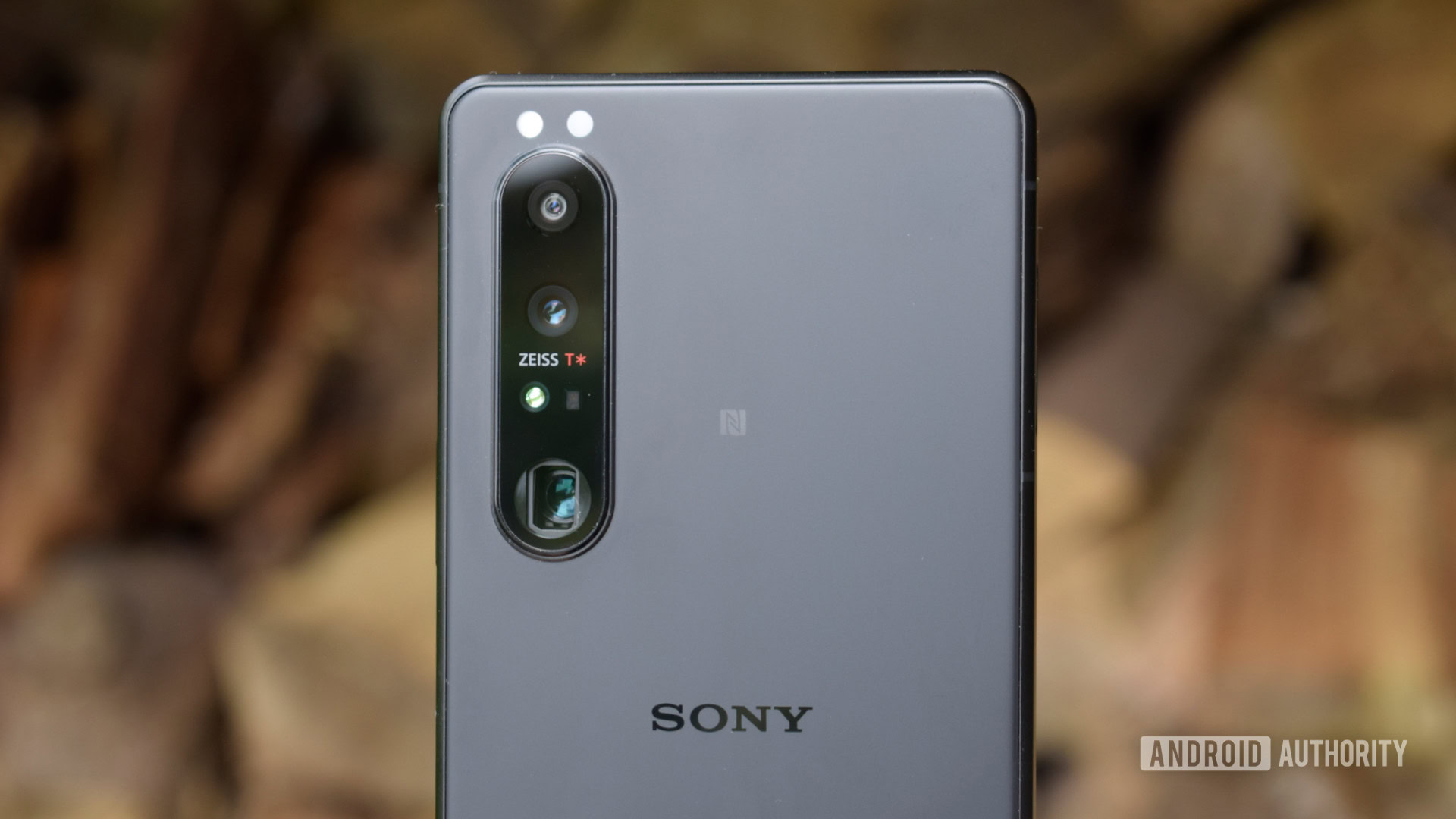
- Sony Xperia 1 III (12GB/256GB): $1,299 / £1,199 / €1,299
Sony’s Xperia 1 III is the follow-up to 2020’s ultra-premium Xperia 1 II smartphone. Initially launched back in April 2021, the Xperia 1 III became available for pre-order on July 1 with a release date set for August 19 in the US and selected other markets.
Priced at $1,299 and packing in its latest and greatest technologies, Sony’s 2021 flagship has the most expensive phones from Apple and Samsung in its sights. If you’re looking for a more reasonably priced Sony flagship, the marginally downgraded Xperia 5 III might be more what you’re after.
Review revisited: The good and bad over six months later
The Xperia 1 III leverages Sony’s Bravia OLED TV, Alpha camera, music technologies, and more to create a smartphone purpose-built for multimedia, photography, and gaming. As you’d expect, Sony tweaks and modernizes its Xperia formula with each iteration. One of the more notable new inclusions with the Xperia 1 III is a periscope zoom camera featuring movable lenses for a switchable focal length. This novel idea provides enhanced zoom qualities without doubling up the number of cameras. Combined with a high-end Snapdragon 888 processor, wireless charging, dual front-facing speakers, and a 3.5mm headphone jack, there’s a lot of technology under the hood.
Unlike some of its rivals, Sony includes a 30W USB Power Delivery adapter and USB-C cable in the box. It also plays nice with third-party USB Power Delivery accessories. The Sony Xperia 1 III is available in Frosted Black and Frosted Purple colorways.
Design: Classic Sony
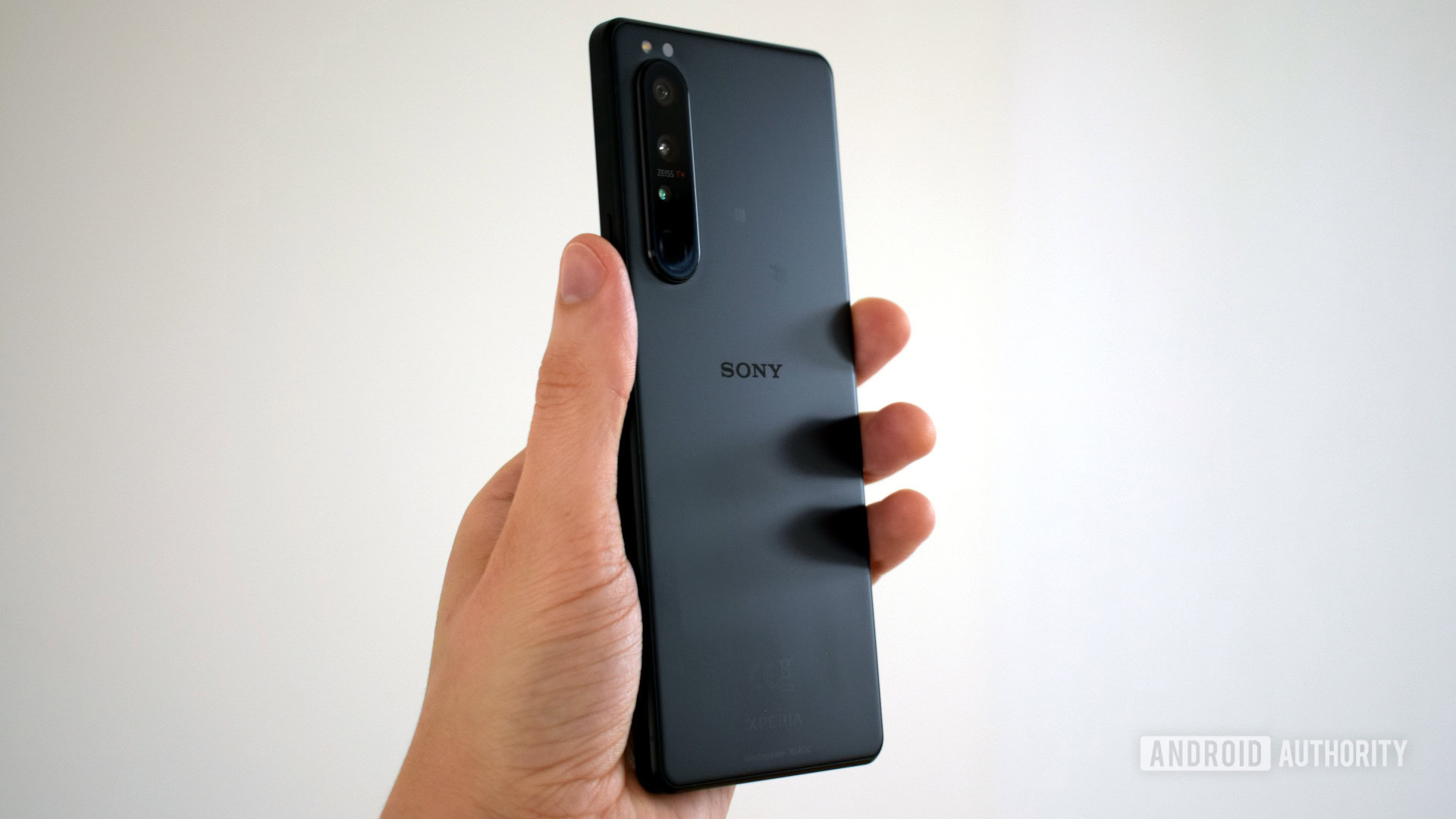
- Gorilla Glass Victus (front) and Gorilla Glass 6 (rear)
- 165 x 71 x 8.2mm
- 186g
- Side-mounted fingerprint reader
- IP65/IP68
- 3.5mm headphone jack and front-facing speakers
- Dedicated Google Assistant/camera buttons
- Frosted Black and Frosted Purple colors
Sony retains its familiar design aesthetic with the Xperia 1 III. The sides are squared-off in Sony’s signature style with rounded edges for easy handling. Sony hasn’t embraced the notch or punch-hole camera look of its rivals, instead opting for a thin chin and forehead bezel that’s slender enough to go unnoticed. The result is a bold monolith that continues to stand out next to its rivals.
It’s still one of the few phones offering a dedicated two-step camera shutter button, a right-side-mounted fingerprint reader, and an IP65/IP68 rating for dust and water resistance. The SIM/microSD tray can also be removed without the use of a tool, which is handy if you swap memory cards around often. The audio package continues to stand out all these years later, boasting a 3.5mm headphone jack, an assortment of high-end Bluetooth codecs, and dual front-facing speakers that sound solid although a little light on the bass.
But the customary design doesn’t mean there isn’t anything new about the phone’s build. The handset sports Gorilla Glass Victus protection on the front and Gorilla Glass 6 on the back for scratch protection. I also found fingerprint unlocking a fraction snappier than the previous, even though it’s still not an instant unlock. The new matte finish also helps the handset avoid the grubby fingerprint that plagued previous models.
Another new feature is the addition of a dedicated Google Assistant button located below the fingerprint scanner. This idea has never been hugely popular in the past (cough Bixby) so it’s interesting to see Sony bring back an idea trialed by the likes of the Nokia 4.2, Xiaomi Mi 9, and LG G8. Then again, Sony plays it very close to Google’s ecosystem. As someone who doesn’t use Google Assistant, it’s a shame that this button can’t be remapped to a more useful feature, such as launching an app or turning on do not disturb mode.
The Xperia 1 III looks and feels very familiar to anyone who’s taken a look at Sony’s smartphones in the past five years. We’re definitely talking iteration rather than renovation here.
Display: Best in the business?
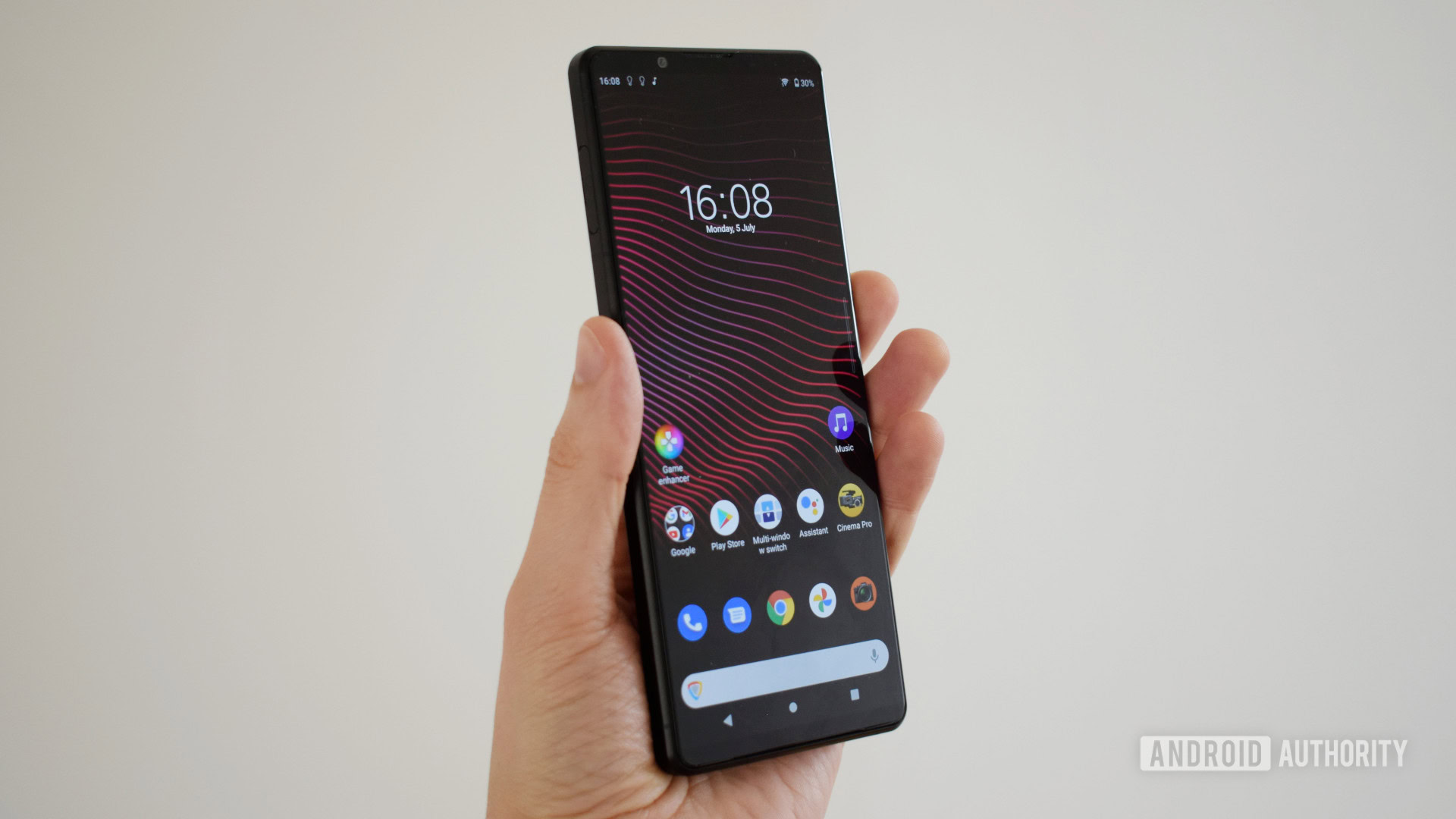
- 6.5-inch 4K OLED display
- 3,840 x 1,644 resolution
- 643 pixels per pinch
- 21:9 aspect ratio, 120Hz refresh rate
Sony’s 6.5-inch 4K HDR OLED display looks fantastic to the eye, with accurate colors and an overkill pixel density. 4K HDR is certainly a premium feature but it is a little unnecessary on such a small display, especially as you’re unlikely to store or stream such large files on a mobile device. When you can find it, cutting-edge content playback certainly looks great here, although most content, YouTube videos, and the like look equally good on other handsets. The display is also nice and bright, although you might struggle to see in very bright direct sunlight.
If Sony’s factory settings don’t quite suit your tastes, the Xperia 1 III packs in a powerful array of display customization features. This ranges from forcing on the 10-bit, BT.2020 color gamut “Creator Mode” to adjusting the panel’s white balance, along with motion blur reduction and video image enhancement toggles.
The 4K HDR OLED display is a wonder for multitasking, video, and gaming.
I’m increasingly a fan of the longer/wider 21:9 aspect ratio too. The Xperia 1 III is a large phone but remains very usable in one hand, unlike some of its rivals, and the tall display is great for stacking apps atop one another. The only drawback is that the phone feels a little weird to hold in landscape, and you’ll be left with black bars when watching back common 16:9 video content. But that’s a very minor complaint.
Speaking of drawbacks, Sony’s display doesn’t offer increasingly popular adaptive refresh rate technology. While it’s great to finally see a Sony phone with a higher refresh rate screen — combined with a 240Hz touchscreen sampling rate — Sony has also opted to disable the panel’s 120Hz mode by default, leaving you in a 60Hz mode out-of-the-box that feels a little dated. This decision is obviously to help save on battery life, and although regular buyers might overlook this option, it’s there for enthusiasts to flick on at will.
Performance: Snappy but missing mmWave 5G
- Qualcomm Snapdragon 888 processor
- Adreno 660 GPU
- 12GB RAM
- 256GB storage with microSD card slot
With a Qualcomm Snapdragon 888 and 12GB of RAM onboard, there are no quibbles or qualms about the performance on offer from the Sony Xperia 1 III. Apps are as zippy as you’d expect from a high-end phone, and this comes in handy when using the phone’s multi-window mode to run multiple apps side-by-side. Benchmark results were some of the best around during its launch window, and yet this doesn’t come at the expense of multi-day battery life (more on that later). Put simply, it’s still plenty powerful in 2022, even with Snapdragon 8 Gen 1 phones hitting the scene.
We tested the Sony Xperia 1 III using our in-house Speed Test G benchmark and it performed admirably with a time of one minute 16 seconds. That’s right up there with the Xiaomi Mi 11’s 1:12, the OnePlus 9 Pro’s 1:15, and faster than the Samsung Galaxy S21 Ultra, which took 1:21. Gamers are well catered for here, although the Xperia 1 III does become warm, meaning that sustained performance might be an issue.
256GB of fast UFS onboard storage combined with a microSDXC card for up to 1TB more adds up to a monstrous amount of space, should you need it. It’s overkill for everything but the largest lossless music and HD movie collections.
There are a couple of things to note for gamers looking to squeeze maximum performance from the phone. As mentioned previously, the display is set at 60Hz to help extend battery life, but you may want to run at 120Hz for an even smoother experience. Then there’s Sony Game Enhancer software, which allows you to change preferences from all-out performance to battery longevity on a per-game basis. This app also includes Sony’s Heat Suppression Power Control feature, which passes power straight through without charging the battery while plugged in, to avoid overheating and maintain optimal battery health. There’s an almost bewildering range of goodies to optimize your gaming experience, whether at home or on the go.
While we’re on the topic of blazing-fast performance, the Xperia 1 III is a 5G-equipped handset. This includes the US market this time around, unlike the Xperia 1 II which was 4G-only in the US. However, the phone only supports sub-6GHz bands and not ultra-fast mmWave spectrum. This isn’t an issue for most 5G consumers at the moment but means that customers on the fastest networks in Japan, Korea, and the US won’t be able to leverage their 5G network’s mmWave capabilities. This is unlike rival smartphones, such as the Samsung Galaxy S22 Ultra. This setup may be better for battery life and avoids a bulkier handset, but it’s a notable omission for a premium-tier product.
Battery: More than a day
- 4,500mAh battery
- 30W wired charging
- Qi wireless and reverse wireless charging
With a larger 4,500mAh battery onboard than the last generation, the Sony Xperia 1 III will last a full day of use. In fact, you can probably expect two full days with a lighter routine. My typical day saw the phone offer about seven to nine hours of 60Hz screen-on time. That’s above average but I didn’t venture far from home, so mileage may vary on mobile data. Enabling the 120Hz display and long photography and gaming sessions will obviously knock down battery life faster. But you can prioritize battery life at the expense of gaming frame rate to avoid running out of battery while on the go.
30W fast charging via USB Power Delivery is a nice upgrade from the Xperia 1 II’s 21W charger, although I clocked closer to 22W actually reaching the phone’s USB-C port. Fully charging the phone took one hour and 47 minutes, which is still rather slow by modern standards — although the handset reaches 50% charge in a more reasonable 26 minutes, enough to get you through a day. While we’re on the topic, Sony enables its Battery Care software by default, which optimizes charging around your typical charging times to prolong battery health.
On top of that, the Sony Xperia 1 III supports Qi wireless charging, which is better for short regular top-ups rather than a full charge. Sony hasn’t disclosed how fast the wireless charging is, which suggests it sits at the typical ~18W power we usually see for Qi support.
The Xperia 1 III can also charge other gadgets both wirelessly, thanks to reverse wireless charging, as well as via the USB-C port. This is a pretty handy feature to charge up your Qi-enabled wireless earbuds while out and about.
Camera: Brilliant yet flawed
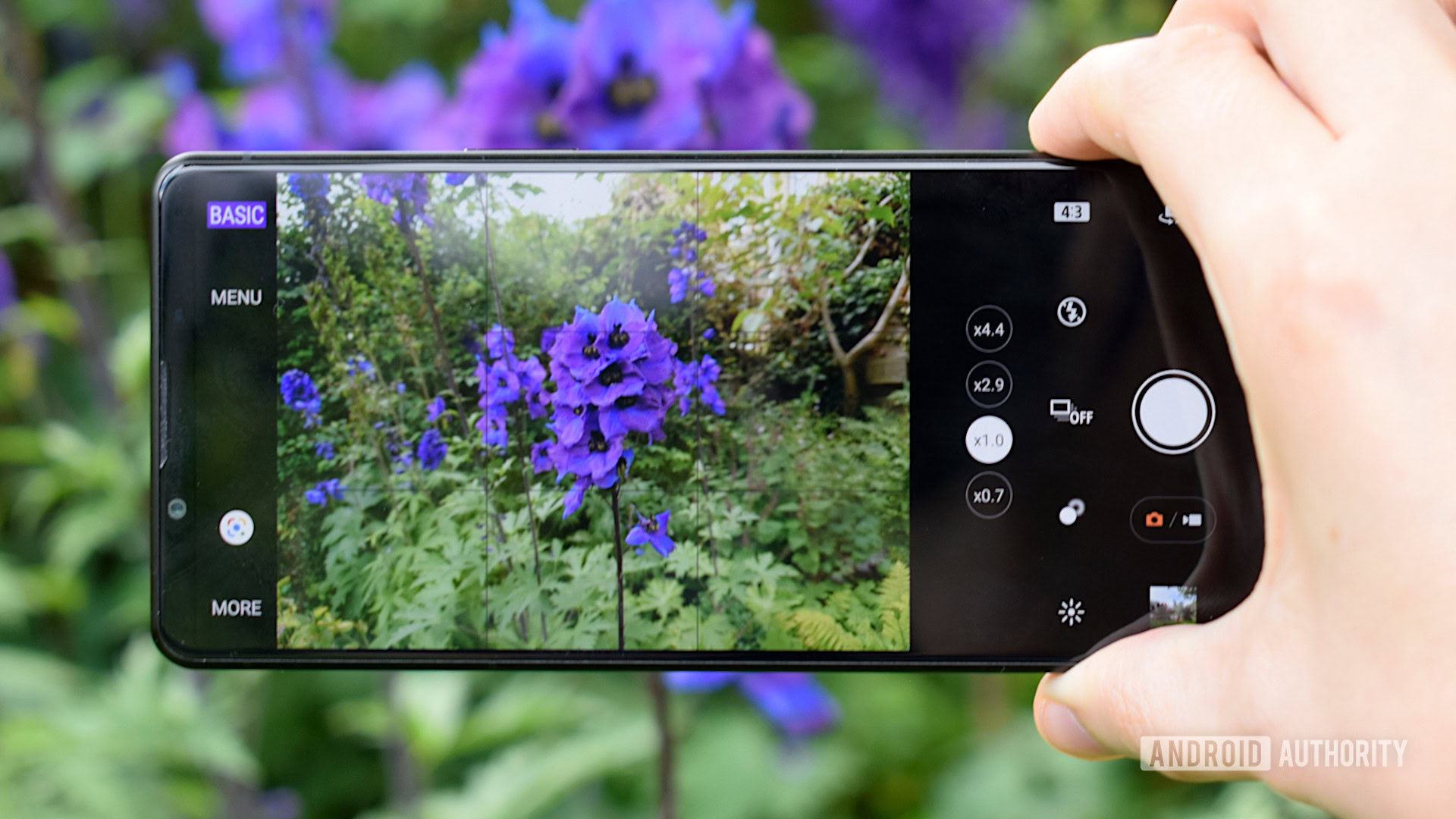
- 12MP OIS, dual-pixel PDAF ( f/1.7, 1/1.7-inch sensor)
- 12MP ultra-wide, dual-pixel PDAF ( f/2.2, 1/2.6-inch)
- 12MP periscope zoom, OIS, dual-pixel PDAF (f/2.3 70mm focal length, f/2.8 105mm, 1/2.9-inch)
- 3D time-of-flight sensor
- 8MP front camera
- Cinema Pro 4K video at up to 120fps
Before diving into the photos, I want to give kudos to Sony for addressing a major gripe of mine from the Xperia 1 II. The Xperia 1 III ships with a single camera app, combining basic functionality with its Alpha-inspired Camera Pro capabilities. The result is a more refined experience that avoids the headache of juggling apps to find the settings you want. The setup will also help less experienced photographers dabble with some of the camera’s powerful settings more easily, such as the incredible 20fps burst mode.
However, the app experience still isn’t perfect. The Basic mode is missing HDR controls, seamless pinch-zooming between camera lenses, and a dedicated Night mode. Portrait Selfie, Panorama mode, 120fps video recording, and Sony’s Creative Effects are still oddly housed in their own separate apps (complete with individual app permissions) under the More button. But the changes are definitely a step in the right direction.
When it comes to image quality, the Sony Xperia 1 III takes some of the best-looking pictures out of all the phones we’ve tested. Even without resorting to Pro settings, the camera’s colors and white balance are easily among the best in the business. The main camera’s 12MP sensor still provides enough detail that is more subtly processed and softer than other flagship cameras. This smartphone can take some seriously amazing pictures.
Sony seems to have addressed some underlying exposure and HDR detection capabilities this time around. Consistency is improved, with fewer dark or overblown images. That said, the phone’s HDR implementation isn’t as powerful as that found in rival handsets, so you’ll occasionally see some clipping, particularly on overcast days.
Related: The best camera phones you can get
Unfortunately, all of the cameras perform worse in low light. The Xperia 1 III pauses to capture even in dimly lit conditions, although the main camera’s pictures hold up pretty well for the most part. However, turning the lights down lower results in a notable lack of exposure and an increase in grain. The lack of a multi-exposure Night mode means you can forget about using the zoom cameras in low light as they’re too noisy. In general, low light shooting is a mixed bag even if you can master the phone’s Pro controls.
The standout feature in the Xperia 1 III’s camera package is the new periscope camera. It offers 70mm and 105mm switchable focal lengths with a single 1/2.9-inch sensor. This equates to roughly a 2.9x and 4.4x optical zoom, which extends out to 12.5x digitally. As well as providing a longer zoom, a single image sensor ensures consistent image quality and colors when switching focal lengths. It’s never been easier to frame and capture the ideal shot.
Unfortunately, image quality ranges from excellent to unusable. I love the depth of field available for macro thanks to the switchable focal lengths, but the periscope camera occasionally suffers from poor focus and/or object tracking. This is most prevalent when switching to 105mm and shooting landscape and long-distance shots.
I reached out to Sony about the issue, and the company noted that the telephoto lens is more susceptible to camera shake and blur than the main or wide-angle cameras. Sony also notes that “in rare cases, the images may shift slightly when shooting with HDR.” To avoid this, you can use the camera’s Pro Mode and select DRO Auto or D-R Off, according to Sony.
It’s a bit disappointing, as Sony makes a big deal about its AI and ToF sensor combo for real-time tracking and focusing. But these zoom issues aside, Sony’s object tracking functionality seems to works well, keeping an object you select in focus as it moves around the screen.
The 16mm wide-angle camera is also decent, offering a very wide, distortion-free field of view. Details are quite soft, but that’s preferable to the over-sharpening we tend to see. It works OK for macro photography too. Sony includes the option to prioritize quality over distortion correction. This mode results in fractionally sharper images but with a very noticeable fish-bowl look. It’s not really worth using other than for effect.
Unfortunately, the wide-angle camera has a warmer white point than the main and zoom cameras, leaving some pictures with a pinkish tint. You can also spot unsightly purple fringing in HDR environments, so the setup is a little inconsistent.
Sony’s selfie camera is a significant letdown compared to the rear camera package. Even in bright lighting, face textures appear rough, highlights clip, and there’s noticeable noise in the background. In lower lighting, details quickly smudge and blur even more. Worse still, the phone’s Portrait Selfie mode offers embarrassingly bad edge detection for a flagship smartphone.
More pictures: Sony Xpera 1 III vs the best camera phones of 2021
Sony redeems itself with some cutting-edge video features. 4K video is supported at up to 120fps, and the quality lives up to the same standard as the still images thanks to some decent stabilization. However, the phone does become rather warm when shooting video and it’s a big drain on battery life. There’s the basic video mode in the photo app alongside the separate Cinema Pro app, which is based on the Sony FS cinema cameras. There’s a bewildering assortment of control here that will suit knowledgeable videographers. But it’s definitely not a tool for the typical smartphone user.
You can check out the full-resolution camera samples in this Google Drive folder.
Software: Google’s take
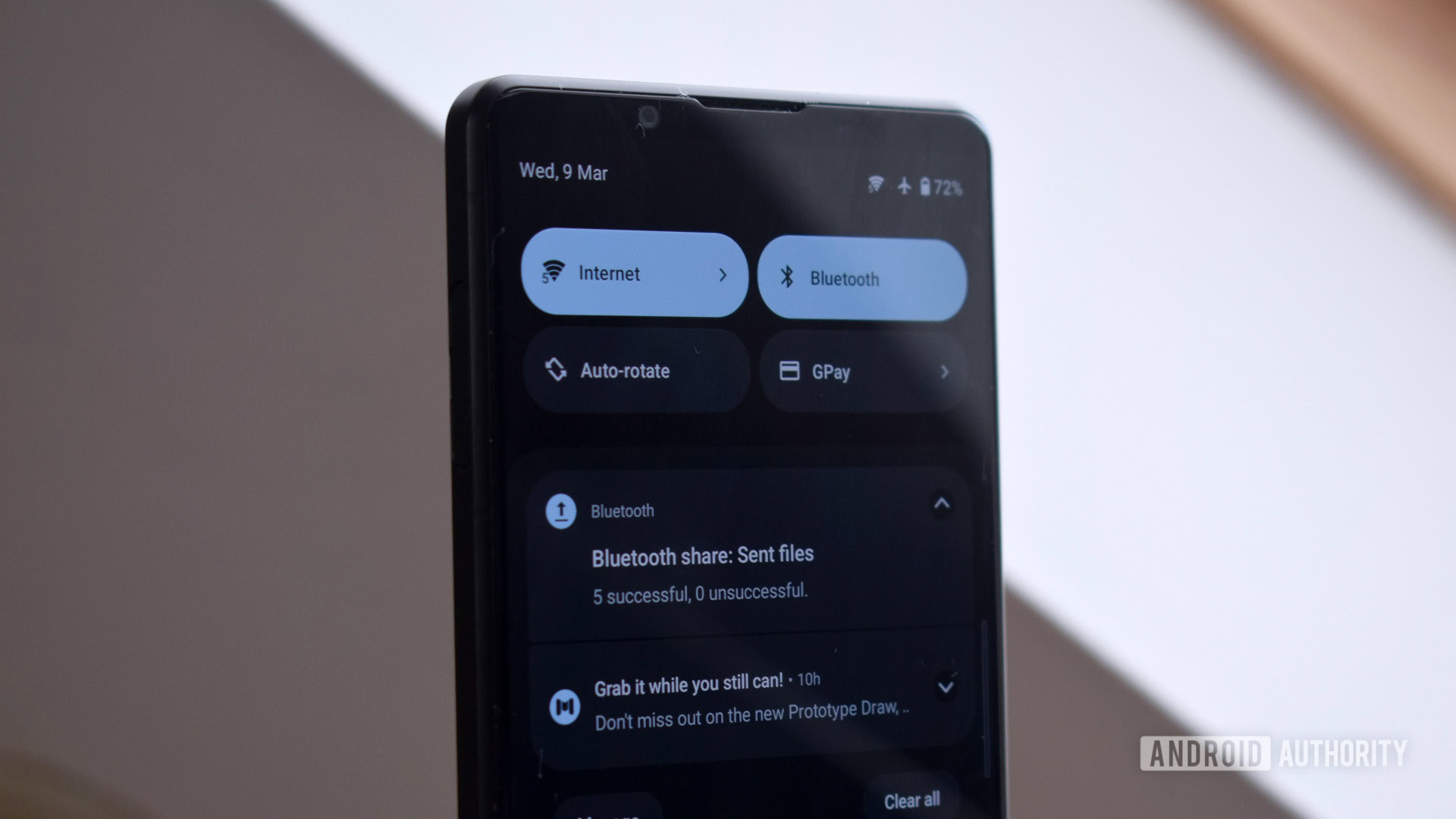
- Android 11 (upgrade to Android 12)
- Two years of support after launch
Unlike a lot of other big tech brands, Sony sticks very close to Google’s vision for Android. There’s minimal skinning and reliance on Google apps for things like Calendar, Messages, and even Google Photos for the phone’s gallery. You’ll still have to pay for Google One if you want all of Photos’ enhancement options, but at least this version of the app doesn’t bug you to upgrade. With a dedicated Google Assistant button this time around, Sony clearly expects its customers to already be heavily invested in Google’s ecosystem.
Sony heavily leverages Google's ecosystem but isn't afraid to put its stamp on the software.
That said, Sony packs in a number of extra features and options tucked away in the settings menu. It’s quite a task to go through them all. For example, there’s a slew of custom display, battery, and audio settings to help set the phone up just how you like it. The Xperia 1 III also supports navigation gestures or traditional buttons, multi-window, slide-sense shortcuts, and native DualShock 4 controller support for gamers. The Android skin may look close to stock Google, but Sony isn’t afraid to put its stamp on the user experience.
There’s a familiar assortment of extra apps included out of the box which verges on a little bloated. Along with a couple of games, Facebook, LinkedIn, Netflix, a TIDAL free trial, and others, Sony includes its own music, game enhancer, and news apps. Annoyingly, these third-party applications can only be disabled rather than uninstalled, if you don’t want them.
For photographers, there’s now just a single Photo Pro app that includes a more beginner-friendly basic mode. For videographers, the classic Cinema Pro app of yesteryear remains unchanged. Sony’s apps are fine for their purposes, but emulating the layout of its professional-grade cameras results in a lack of shared design language that makes navigating menus and features a learning experience for each app.
When it comes to updates, Sony hasn’t pledged to match some of the better policies around, such as Samsung’s four-year update pledge for new handsets. The company has confirmed that it “aims to support Xperia 1 III with the latest Android updates for two years after its launch”. That’s a little soft sounding for our liking, especially for a £1300 phone, but Sony has previously offered two years of OS upgrades along with regular security updates in between and it sounds like the Xperia 1 III will receive the same.
We received Sony’s Android 12 update in February 2022. The update applies all the core new Android features and also skins the notification shade, settings menu, and widgets with the same Material You look as Google’s Pixel series. However, Sony hasn’t implemented Google’s wallpaper color extractor, so you’re stuck with the default default blue-ish color scheme. The move to Android 12 hasn’t fundamentally changed any of Sony’s pre-installed apps, so it’s the same core experience as before with a few tweaks. Depending on how you look at it, that might feel like a bit of a missed opportunity to fix some issues.
Sony Xperia 1 III specs
| Sony Xperia 1 III | |
|---|---|
Display | 6.5-inch OLED 21:9 aspect ratio 4K resolution 120Hz refresh rate 240Hz touch sampling rate Gorilla Glass Victus |
Processor | Qualcomm Snapdragon 888 |
RAM | 12GB |
Storage | 256GB UFS microSD card support |
Power | 4,500mAh battery 30W wired charging Charger included in box Qi wireless charging Reverse wireless charging |
Cameras | Rear: 1) 12MP main (24mm) 1/1.7" sensor ƒ1.7, dual-PD auto-focus, OIS 2) 12MP ultra-wide (16mm) 1/2.6" sensor ƒ2.2, dual-PD auto-focus 3) 12MP telephoto (70mm/105mm) 1/2.9" sensor ƒ2.3/ƒ2.8, dual-PD auto-focus, OIS 4) 3D iToF sensor Front: 1) 8MP single |
Video | Cinema Pro 4K at 120fps |
Audio | 3.5mm headphone jack Dolby Atmos and DSEE Ultimate 360 Spatial Sound |
Connectivity | 5G support (Sub6 only, no mmWave) [SIM + SIM] or [SIM + microSD] Bluetooth 5.2 Wi-Fi 6 a/b/g/n/n/ac/ax A-GPS, A-GLONASS, Beidou, Galileo, QZSS |
Security | Side-mounted fingerprint sensor |
Durability | IP65/IP68 against water and dust Gorilla Glass Victus Gorilla Glass 6 |
Software | Android 11 |
Dimensions and weight | 165 x 71 x 8.2mm 186g |
Colors | Frosted Black and Frosted Purple |
Value and competition
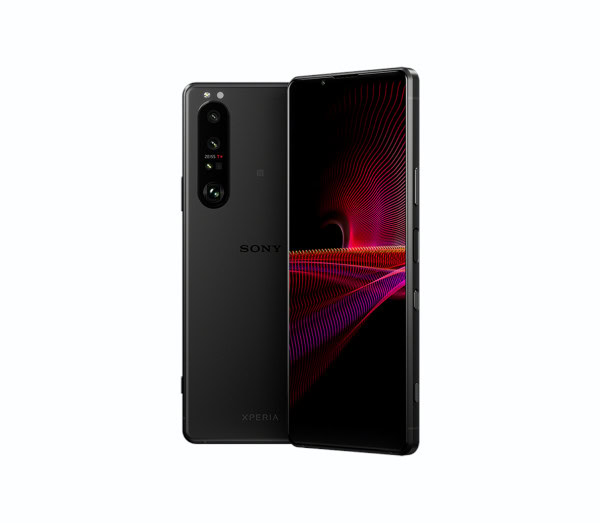
The Sony Xperia 1 III is a really expensive handset. However, the launch $1,299 price tag is a full $100 more than the previous-gen model for what feels like a very similar phone, although Sony has beefed up the camera, performance, charging, and battery capabilities to help cushion the blow. Sony has discounted the handset by $100 since its launch, but it still retails for a hefty $1,199 through official channels.
This price drop brings the Xperia 1 III more in line with equivalent 256GB variants of both the Apple iPhone 13 Pro Max ($1,199) and Samsung Galaxy S22 Ultra ($1,199). You should definitely have your eye on these two smartphones in this price bracket, especially if you’re after a stellar smartphone camera, bleeding-edge performance, and all the latest bells and whistles. Although if money’s no object, the Sony Xperia Pro-I ($1,800) might interest you as well. But be warned, that phone has some glaring issues for that price.
More ideas: The best Android phones you can buy
While the Sony Xperia 1 III is a very good phone, the company is still asking an awful lot of money for an enthusiast-targeted handset that lacks 5G mmWave capabilities, doesn’t surpass the very best camera phones, and doesn’t have the best update record either. If you’re going to make full use of all the extra media capabilities, then perhaps Sony’s 2021 flagship is a worthwhile investment.
That being said, you can often find the Xperia 1 III on sale for closer to $900 at some retailers, such as Amazon. Although that’s a much more palatable price tag, we’d still recommend checking out the Google Pixel 6 Pro ($899) and OnePlus 10 Pro ($899) as some alternatives. Those phones boast superior update promises from their manufacturers, so they’ll last you much longer for the same money, though the Pixel 6 Pro is by far the better choice of the two affordable flagships.
Sony Xperia 1 III review: The verdict
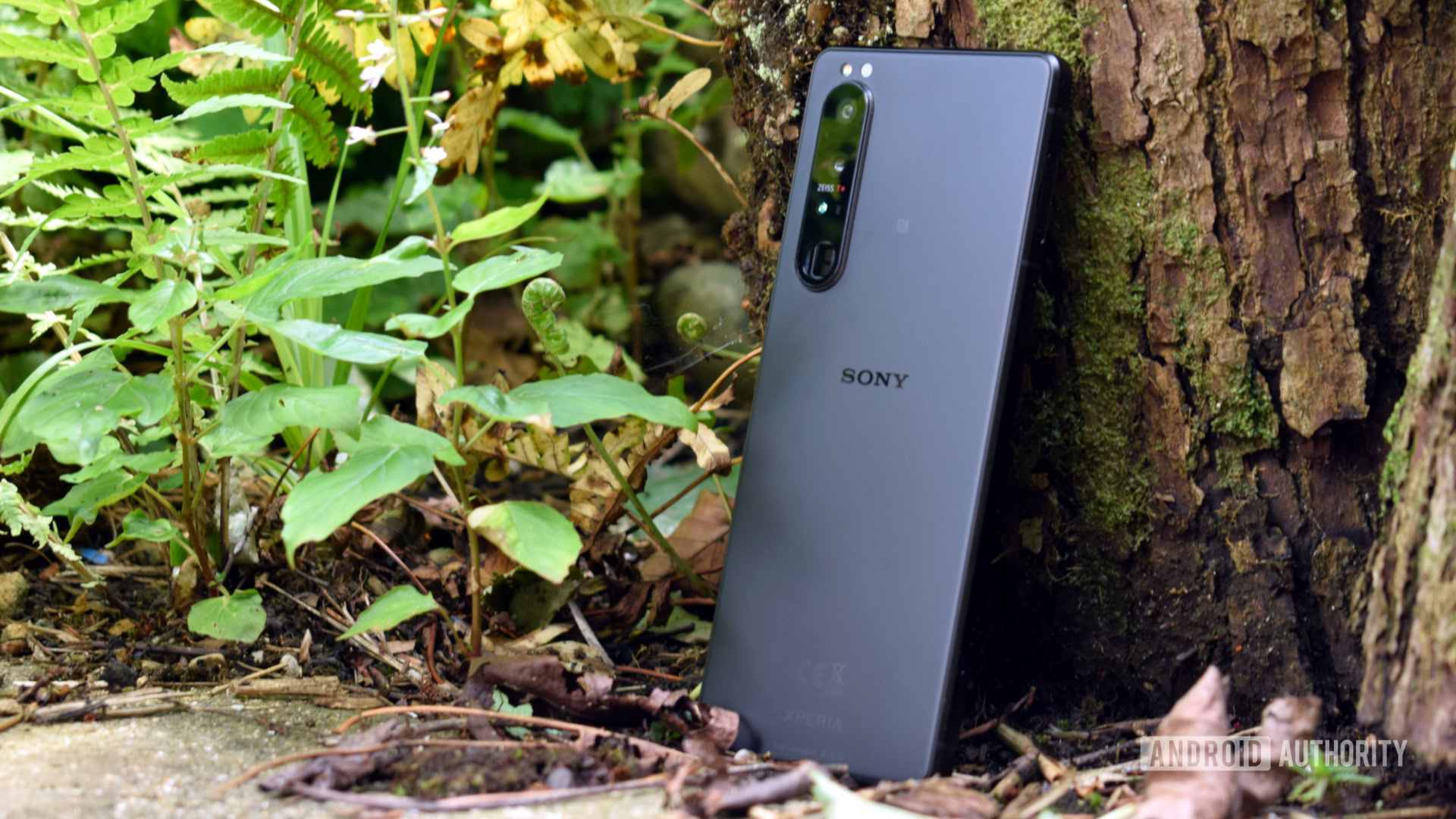
I like the Sony Xperia 1 III, I really do, but $1,299 makes it one of the most expensive flagships to ever grace the market. Granted, the handset offers plenty of storage, a unique camera system, and one of the best displays in the business, not forgetting its assortment of charging, multimedia, and other technologies. But at this price point, you have to compare the phone to its competitors, and it’s missing a few key things.
5G mmWave is a hit-and-miss feature depending on your market but it’s a futureproof addition you have to expect from this price bracket. Likewise, the camera’s low light and selfie capabilities are not quite up to scratch. The software is similarly hit and miss. With Google apps and a dedicated Assistant button, Sony keeps its version of Android close to Google’s vision. At the same time, the phone is loaded with TIDAL, Call of Duty, Facebook, and more bloat that we’ve chastised other brands for in previous years. For customers looking for the best all-around flagship, the Galaxy S22 series or even Sony’s own cheaper Xperia 5 III is probably the better buy.
The Sony Xperia 1 III oozes style and substance, but it will make your wallet weep.
That being said, there’s definitely a niche audience that the Sony Xperia 1 III will appeal to. It provides arguably the best all-around multimedia experience in a smartphone, plenty of storage for shutterbugs, and gaming chops that are as good as any other in the business — although the $100 price increase is still likely to be a hard pill to swallow even in these circles.
Overall, the Sony Xperia 1 III stumbles to offer a flawless flagship package, but it’s as close as the company has ever come to building an exceptional smartphone. There’s fierce competition at this price point, and unless you will absolutely make the most of Sony’s more niche features, there are better all-rounders you can buy for the same or even less cash. But if you do want to dive head-first into the Xperia experience, then this is undoubtedly Sony’s best phone to date and you’ll love it — and if that’s you, it’s still absolutely worth buying in 2022, especially if you can find it on sale as it has occasionally dropped to as low as $900. Personally, it’s a phone I’d love to own but could never justify buying.